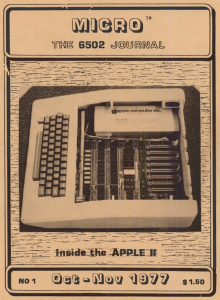 |
MICRO The 6502 JournalPublished by Robert M. Tripp, The Computerist |
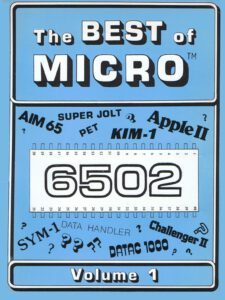 |
Best of MICRO 1 |
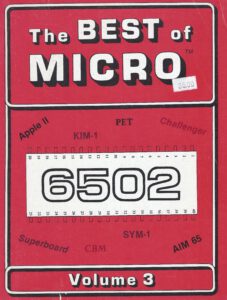 |
Best of MICRO 2 |
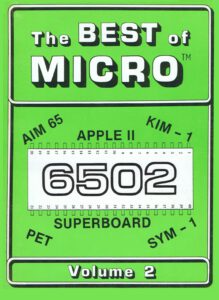 |
Best of MICRO 3 |
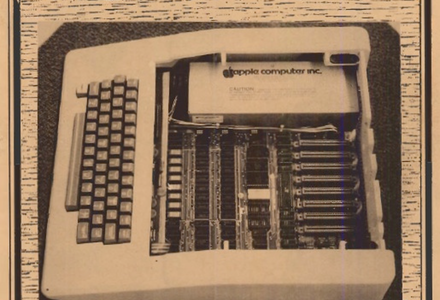
About small SBC systems

 |
MICRO The 6502 JournalPublished by Robert M. Tripp, The Computerist |
 |
Best of MICRO 1 |
 |
Best of MICRO 2 |
 |
Best of MICRO 3 |
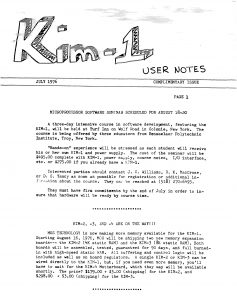 |
KIM-1/6502 User Notes is a publication about the KIM-1, slowly evolving to other 6502 systems like SYM-1 and AIM 65. Editor was the famous Eric Rehnke. After issue 17 it merged with Compute II. |
KIM-1 / 6502 USER NOTES INDEX BY SUBJECT VOLUME 1(Issues 1 till 6)
APPLICATIONS FOR KIM GENERAL INFORMATION
Application suggestions 1 Correction To Memory Map -------- 2
Calculator--Interface 4 Defective 6502 chips------------- 3
Interface 6 Discussion of Memory Allocation - 5
--T.I.5050 5 DISPLAY (on board)
Chess Clock Program 4 red filter for-----------------5
CONTROLLING Use of------------------------------1,5
--- Function Generator 1 EXPANSION OF SYSTEM
--- Light Intensity 4 KIMSI--------------------------4
--- Motor Speed 4 MEMORY
--- Touch tone encoder 1 Adding memory to KIM-1--------5
Degree Dispatch Computer 5 Diagnostic------------------- 2,5
Frequency Counter 3 Expansion---------------------4,3
OSI Memory-------------------------3
GAMES Using SD Sales 4K RAM Board 3
Bagels----------------- 5 Hardware tips
Battleship--------------6 Packaging KIM-1 --------------- 6,3
Horserace-------------- 3 Power Supply for KIM ---------- 4
Hunt the Wampus-------- 2 Red Filter for Display----------5
Jotto------------------ 5 INTERVAL TIMERS :
Kimmaze---------------- 4 The Other Timer-----------------2
Microchess------------- 3 and cassette 2
Mastermind------------- 5 Use Of--------------------------5,5
Moon Lander-----------1,3 MIKIM------------------------------5
HEDEX Program 1 OPERATION TIPS
MATH TEST Program 4 Using SST ---------------------2
Mini-l Loran-c 6 Using ST to start programs----4
MUSIC:KlugeHarp 3,2,6,6 Page 1 Programming Problems--------6
Real Time Clock 4, 5 Packaging your KIM-1---------------3
Square wave generator 5 Power Supply-----------------------4
Stopwatch Program 2 Presetting 00F1, 00F2 4
Telephone Dialer 4,4 System Architecture 3
Packaging your KIM-1---------------3
CASSETTE PROBLEMS/SUGGESTIONS Presetting 00F1, 00F2 4
Certification of tape 6 System Architecture 3
Copying Cassette tape 3 TABLES for KIM-1
Fast tape problems 6 Interval Timer Table------------3
Hypertape 2,6 Relative Branch table----------2
Interval timer/cassette 1 OP Code table-------------------4
Notes on cassette 6 Techniques
PLL set program 5 Mnemonic Improvement------------41
PROBLEMS with Cassette 3 BIT Data---------------41
Software control of tape Top Down Programming 4
reading 4 Modifications/ IMPROVEMENTS
Speed up 4 Crystal Stabilization------------5
Supertape 2 Factory Mods. -------------------4
Supertape improvement 4 6502 Register Monitor Apparatus 4
Tape Certifying 6 74Ls145 ------------------------ 3,4
Tape Dupe 4 6502 Microprocessor Board-----------6
Using Cassette 6 POWER ON RESET CIRCUIT 3
Varification of Data 4 NOTES FROM THE FACTORY 5
Vutape 2
INDEX Issue 13
SOFTWARE FEATURE 1
KIM Hexpawn (your KIM can learn to win) Robert C. Leedon
6502 OP CODES (arranged logically for easy look up) Jim Butterfield 6
CASSETTE INTERFACE STUFF 7
Tape Verify II Dr. Barry Tepperman
Radio Tape Feedback Daniel Gardner
Reliability Hint John Watney
Help Relay Package Fixit Mike Firth
Tape File Recovery Routine Loel Swank
KIM Software On Cassette
LANGUAGE LAB 10
Focal
I/O Mods Editor
Functions Editor
Basic
I/O Mods Marvin De Jong
A Basic Question Editor
Basic Timing Comments F. E. Kempisty
KIM Basic Hint Micro-Z Company
Basic Renumber Program Harvey Herman
Tiny Basic
Two Tiny Basic Mods Michael Day
Ramblings About T.B. Lew Edwards
Forth
Forth Comments Example John P. Oliver
Assemblers
Two Pass Patch To Aresco Assembler John Eaton
Mods To MSS Assembler Richard M. Bender
DESIGN CORNER 16
A 6522 I/O Board
KIM-4 BUS PINOUT 18
VIDEO GRAPHICS 19
Video Displays Editor
Comments On Visible Memory Lew Edwards
TVT-6 Adventure Dennis Chaput
TVT-6 RAM Expansion Michael Allen
Polymorphics Video Board Mods Editor
DEBUG 21
Slow Stepper IV Lew Edwards
LETTERS COMMENTS 22
SOFTWARE LIBRARY
Multi-Mode Adder Jim Butterfield
Pseudo-Random Number Generator H. T. Gordon
ASCII Dump Program Jim Zuber
Keyboard Debounce Routine Thomas J. Rubens
Sound Effects Program Bob Carlson
Melodies For The Music Box Douglas Lyon
'Do Loops'; For KIM Dave Skillman
INTERFACE 26
Camera Speed Tester Mike Firth
Low-Cost Modem Possibility Editor
RPN Calculator Chip Interface Editor
Power-On Reset George Hawkins
The Outside World Connection Editor
More On The Opto-Isolator Dwight Egbert
NEW PRODUCTS 28
Video Driver Package
Price Decrease On Jolt Boards
A 8080 Simulator For The 6502
Eprom Programmer
INDEX Issue 14
INDEX
EDITORIAL
SOFTWARE FEATURES 1
KIM BANNER PROGRAM JIM ZUBER
6KIM DISASSEMBLER
CHECK-OUT ROBERT LARRABEE
LANGUAGE LAB 12
BASIC
MOD AND PROGRAMMING HINT HEINZ JOACHIM SCHILLING
OUTPUT PAGING MOD DICK GRABOWSKY
RENUMBER ADDENDUM AND SOME MODS HARVEY HERMAN
AUTOMATIC LINE NUMBER ENTRY MOD SEAN MCKENNA
A NEW COMMAND DICK GRABOWSKY
PRODUCT ANNOUNCEMENT
'USR' FUNCTION INFO C. KINGSTON
FOCAL
TINY BASIC
FORTH
XPL0
SYM SECTION 18
ACCESSING THE SYM DISPLAYS A.M. MACKAY
SYM NOTES & KIM-4 COMPATIBILITY C. KINGSTON
WUMPUS MUSIC BOX MODS JIM ADAMS
AIM SECTION 19
MANUAL CORRECTIONS JODY NELIS
VIDEO TVT-6 23
POLYMORPHICS VIDEO/KIM INTERFACE MIKE FIRTH
TVT-6 NOTES & RAM EXPANSION MILAN MERHAR
INTERFACING TO THE TVT II JOHN M. RENSBERGER
CASSETTE STUFF 25
MAKE A SHORT CASSETTE TED BEACH
CASSETTE DIRECTORY PRINTOUT PROGRAM CHRIS MCCORMACK
ANNOUNCEMENTS REVIEWS
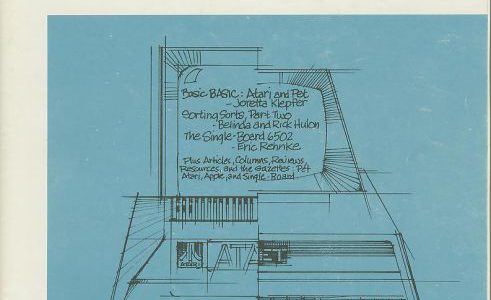
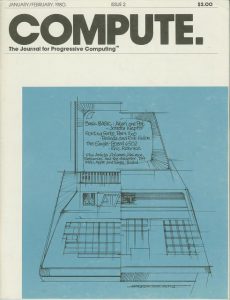 |
Compute!A magazine devoted mostly to 6502 computers. |
Compute II was a short lived split-off of Compute! and also a continuation of the KIM-1/6502 User Notes. Three issues and it was merged back with Compute! again.
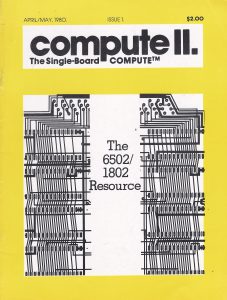 |
HTML version of Issue 1 PDF of Compute II Issue 1 |
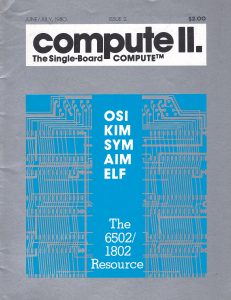 |
HTML version of Issue 2 PDF of Compute II Issue 2 |
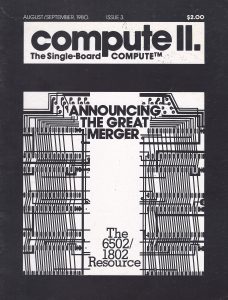 |
HTML version of Issue 3 PDF of Compute II Issue 3 |
Selected articles on KIM-1, AIM 65 and SYM-1 and 6502 in general
Articles by Marvin L. de Jong
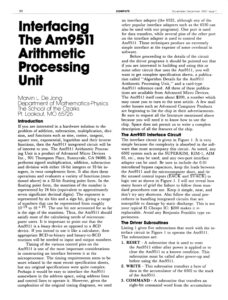 |
Interfacing the AM9511 and various floating point subroutines Compute! 7, 9, 11, 13, 17 |
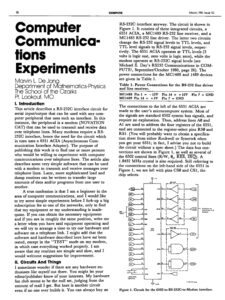 |
Computer Communications Experiments Compute! 10 |
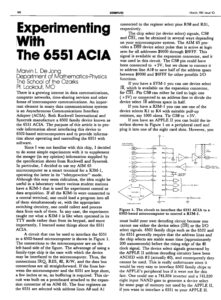 |
Experimenting With The 6551 ACIA Compute! 10 |
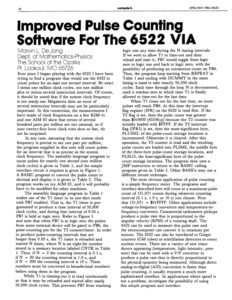 |
Improved Pulse Counting Software For The 6522 Compute! 1 |
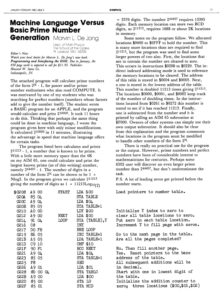 |
Machine Language Versus Basic Prime Number Generation Compute! Issue 2 |
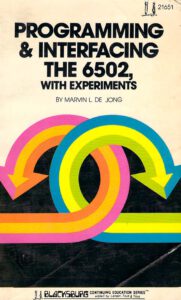 |
The book by Marvin L. de Jong Programming and Interfacing the 6502 with Experiments |
n 1975 MOS Technology started delivery of 65XX ICs. So 2025 marks the 50 year anniversary of the 6502!
The earliest mentions of the KIM-1 are from January 1976. The date of the first edition of the User Manual, and first mentions in e.g. Byte.
So I propose to declare January 2026 as the 50th birthday of the KIM-1!
#50yearsKIM1
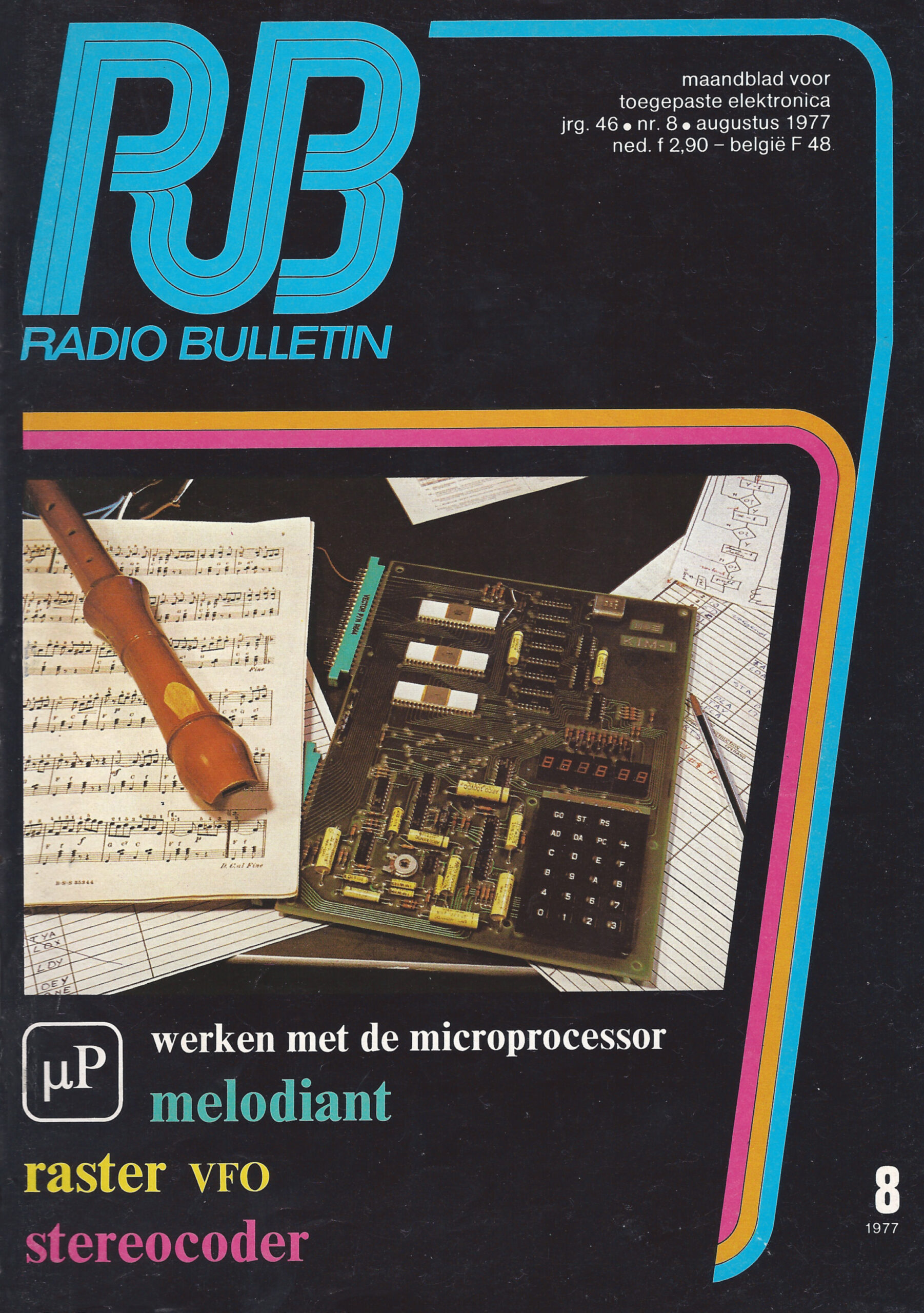
When I acquired a KIM-1 Rev A, obviously sold by NCE/Compumart, it came with some documentation that may interest any programmer working with the MOS Technology (R)RIOT 6530 and 6532.
The timer description the datasheet is a bit vague about how to use. What may help is the document ‘KIM-1 Application Note 2 Interval Timer Operation’ by MOS Technology.
A document with listings of KIM-1 programs called ‘KIM-1 Application Programs CT1’ illustrate the usage of the timer in interrupt mode. You find the documents here:
Compumart KIM-1 Rev A – Retro Computing
PLEASE is a very small package for a standard KIM-1. It has a tiny monitor, command interpreter and many handy subroutines.
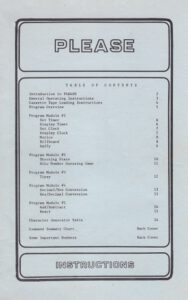 |
PLEASE INSTRUCTIONS |
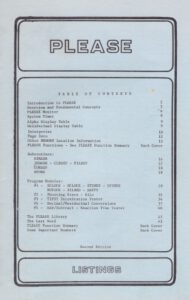 |
PLEASE LISTING |
A small book with five experiments with the KIM-1.
1. User
2. Input/output
3. I/O controller
4. Timing
5. Hardware interrupts
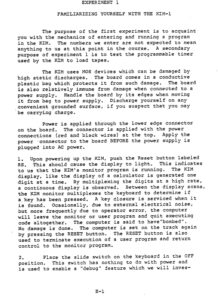 |
KIM-1 experiments) |
With one of my KIM-1s (a Rev G) came a MOS Technology KIM-1 Preliminary datasheet 1976.
Added to the KIM-1 manuals page.
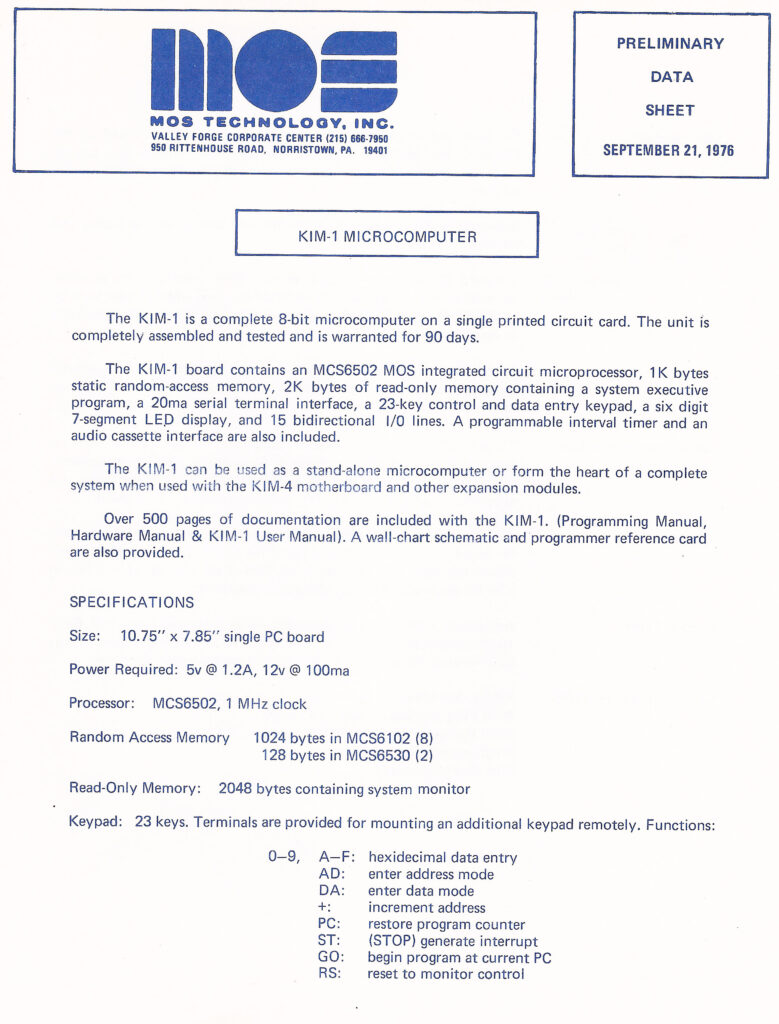
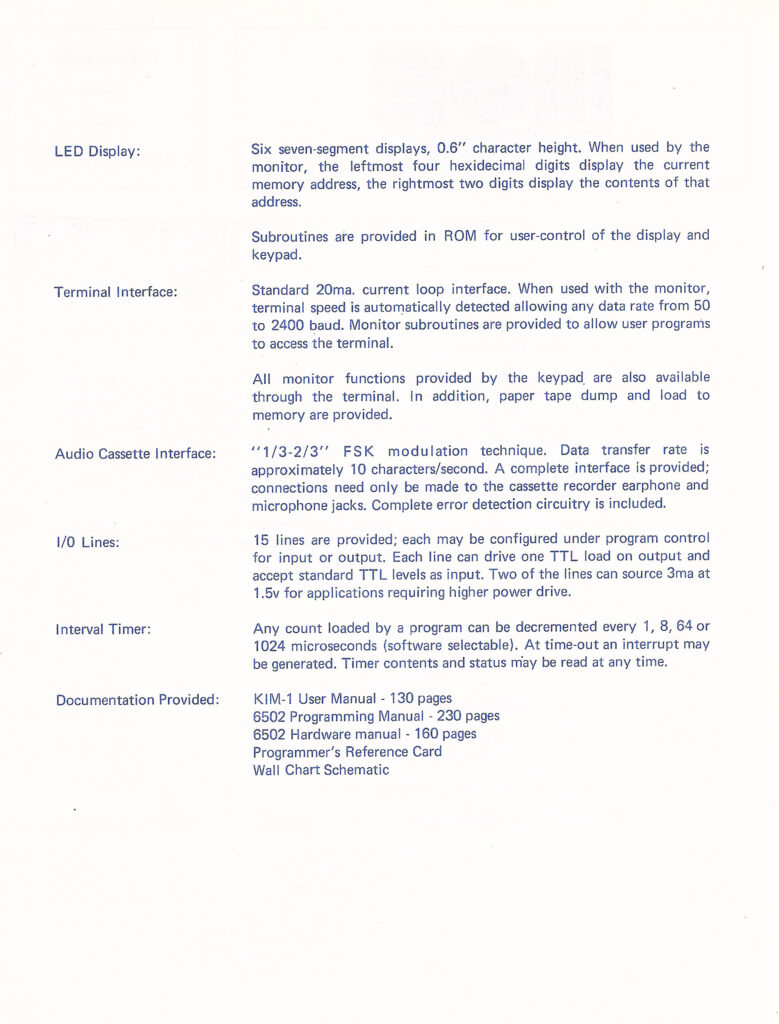
When I acquired a KIM-1 Rev A it came with some documentation revealing its provenance:
Warranty card
Brochure showing the Rev A
A document with KIM-1 program called KIM-1 Application CT1
KIM-1 Application Note 2 Interval Timer Operation
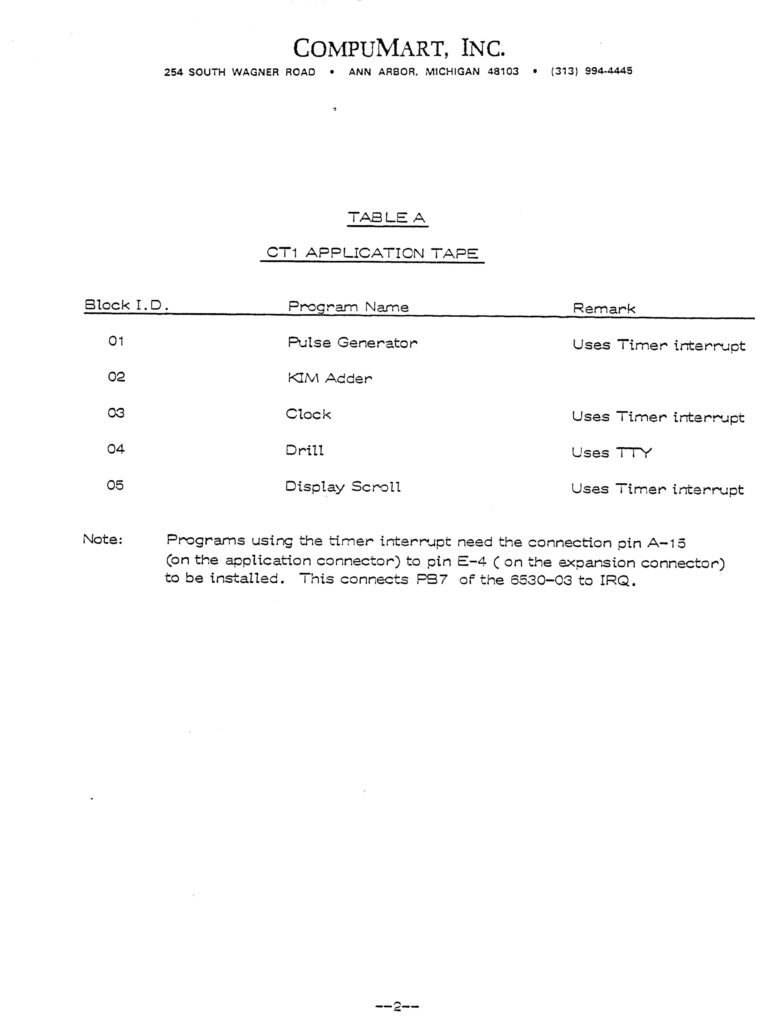
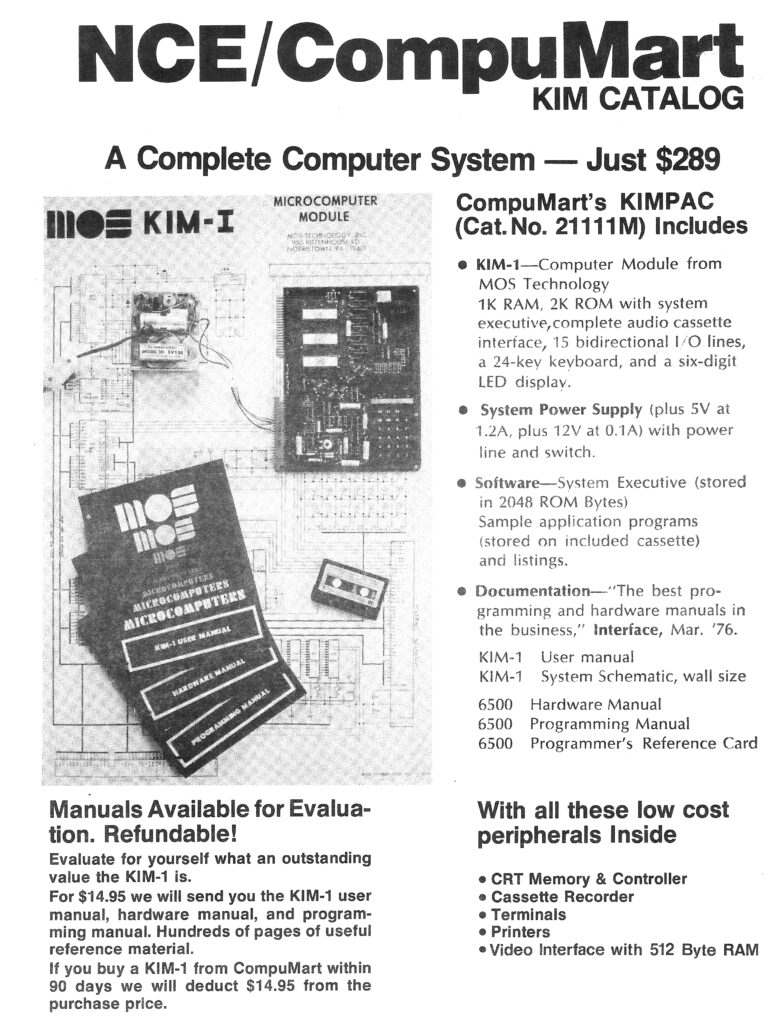

When I acquired a KIM-1 Rev A it came with some documentation revealing its provenance:
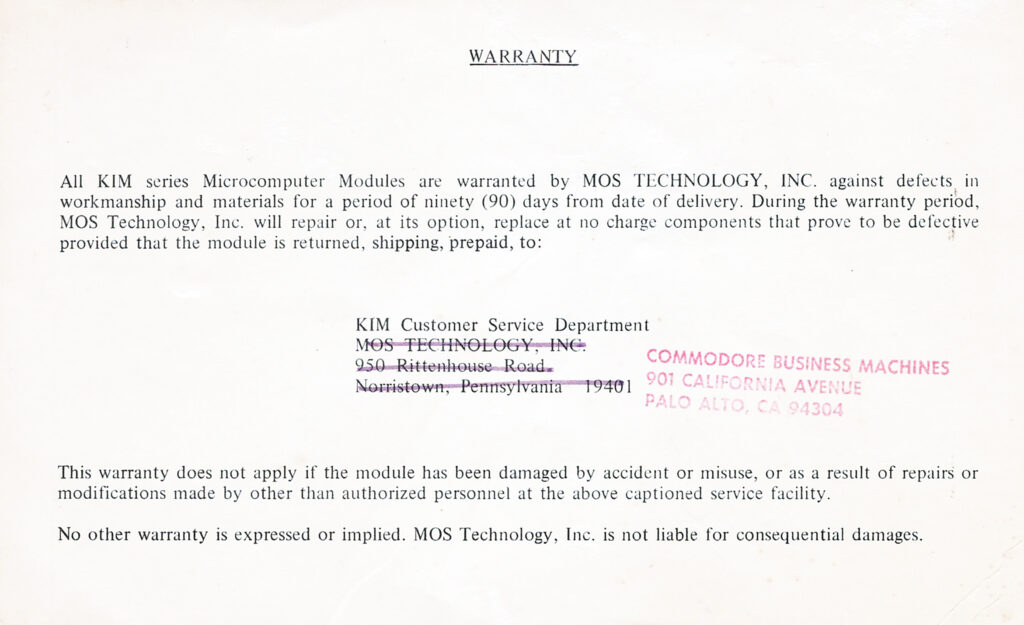

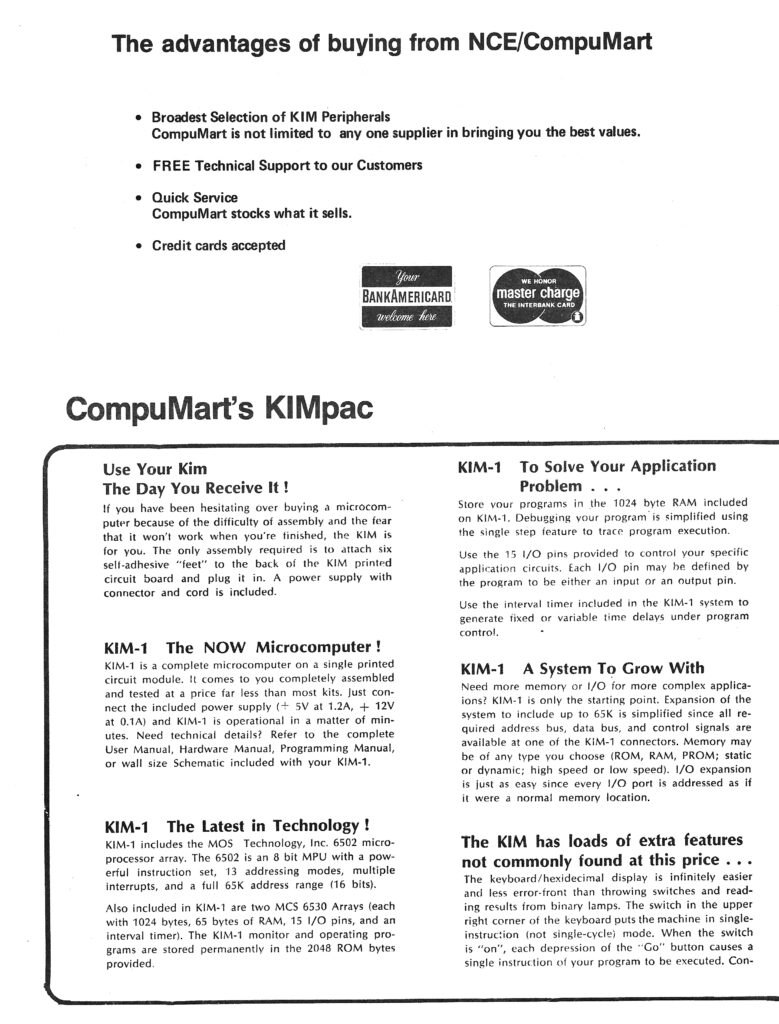

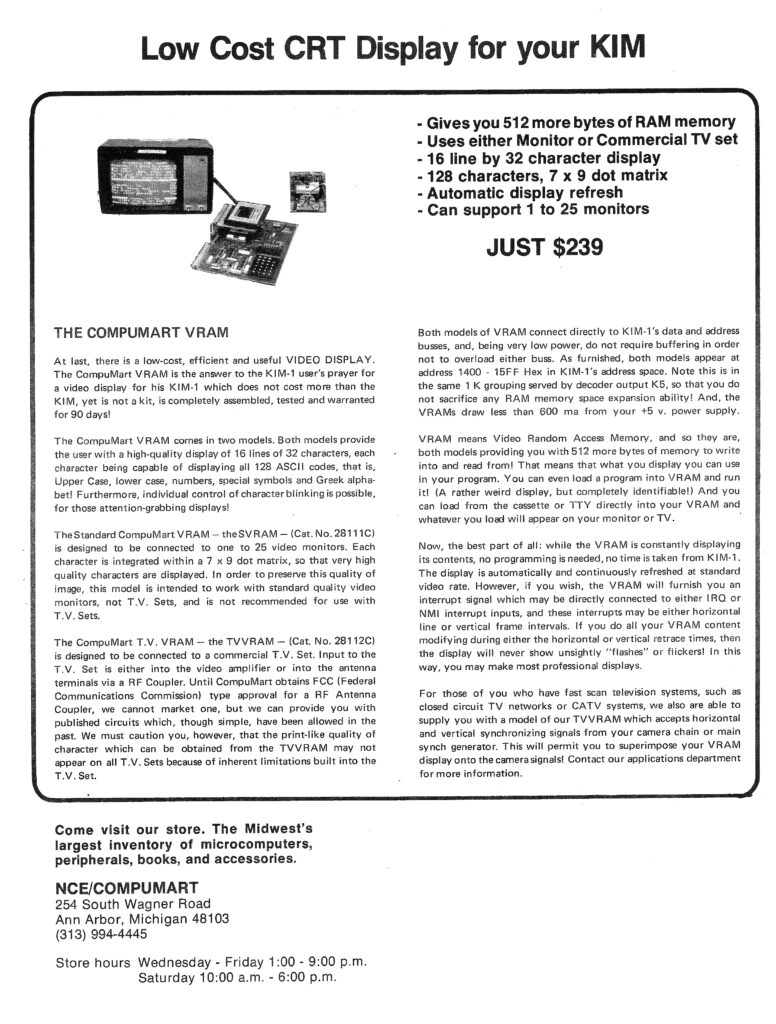

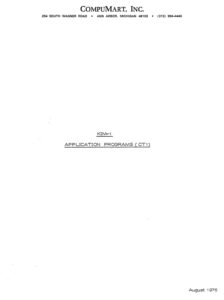 |
KIM-1 Application Programs CT1 |
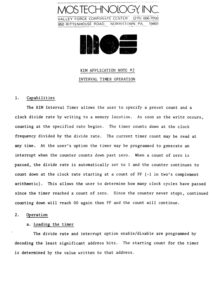 |
KIM-1 Application Note 2 Interval Timer Operation |
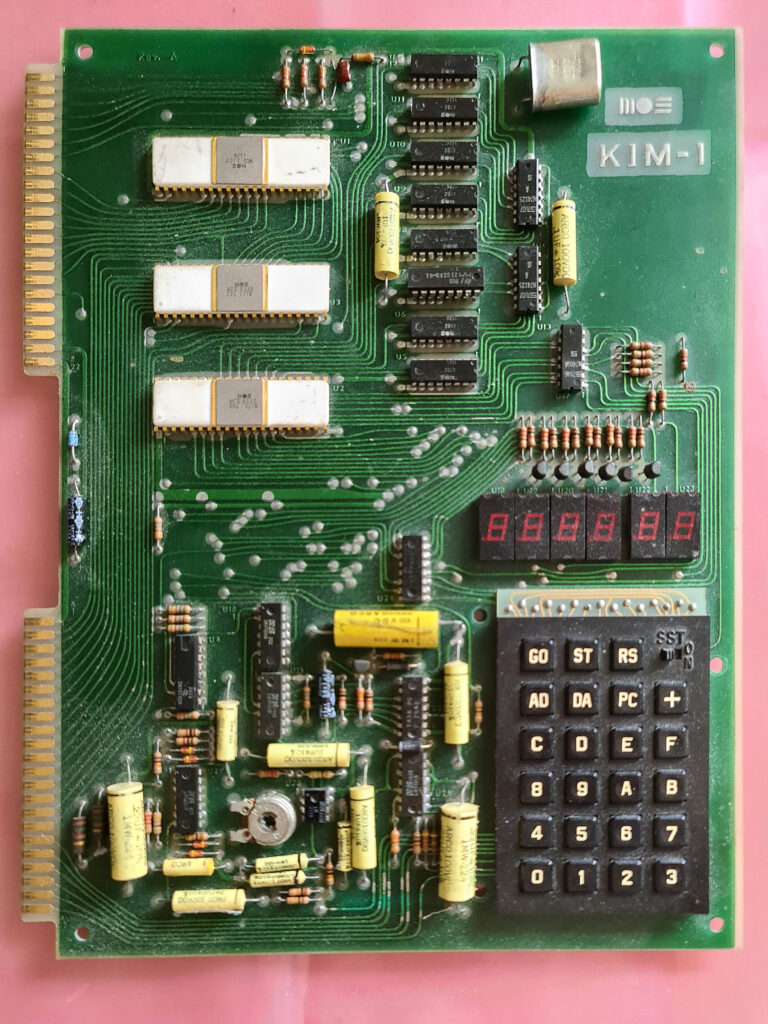
My Rev A CPU week 15 1976